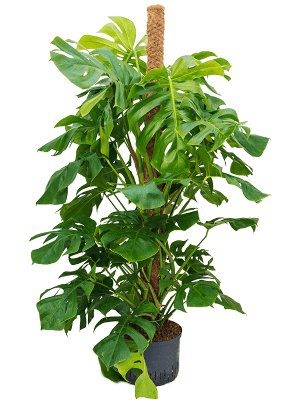
Monstera deliciosa
Tuteur mousse 150
1MODEMK10
Le Monstera est de toutes formes et tailles, très facile d'entretien et les feuilles spéciales pleines de trous en font une plante à la mode et populaire. Souhaitez-vous en savoir plus sur les soins de cette belle plante tropicale? Alors lisez la suite rapidement.
Le Monstera est une plante grimpante rampante, originaire des forêts tropicales humides du sud du Mexique jusqu'au Panama. La plante a une tige épaisse et de grandes feuilles brillantes. Ce qui rend la feuille typique sont les découpes et les trous présents. Parce que cela est si inhabituel, la plante a été appelée « Monstera », ce qui signifie « étrange » en latin. Ces trous et découpes sont non seulement beaux, mais sont également très utiles dans la nature. Ils empêchent la plante d'être renversée lors d'une tempête, car le vent et la pluie passent largement à travers les découpes.
Un Monstera se sentira bien à son aise dans un environnement aéré. Ne placez jamais la plante en plein soleil, et surtout pas derrière une fenêtre où le soleil brille directement, car cela peut entraîner des feuilles brûlées. Si la plante ne produit pas de nouvelles feuilles pendant les mois d'été, il se peut qu'elle soit dans un environnement trop sombre. Déplacez le pot afin qu'elle reçoive plus de lumière du jour. Ne comptez pas sur de nouvelles feuilles en hiver : le Monstera se repose d'octobre à avril.
Le terreau d'un Monstera doit rester légèrement humide au printemps et en été. Arrosez à nouveau la plante dès que le terreau commence à se dessécher. En hiver, le terreau peut rester sec pendant environ une semaine. La quantité d'eau dépend de divers facteurs, tels que l'emplacement et la taille de la plante. Par conséquent, commencez avec de petites quantités d'eau par arrosage. Si le sol est encore très humide après 4 jours, arrosez moins. Il est conseillé de pulvériser la plante régulièrement. Ce sont surtout les spécimens grimpants, avec des racines aériennes, qui aiment être pulvérisés.

Si les feuilles du Monstera se décolorent, la plante peut perdre les vieilles feuilles pour faire de la place à de nouvelles feuilles. Dans ce cas, ce sont souvent les feuilles au bas de la plante. S'il y a beaucoup de feuilles qui se décolorent soudainement, un peu partout sur la plante, cela peut être dû à un mauvais entretien. Si les bords des feuilles deviennent brunes ou jaunes, cela est souvent causé par un excès d'eau. Dans ce cas, nous vous recommandons d'arroser moins souvent et en plus petites quantités. Si les feuilles affichent une lueur jaunâtre et s'affaissent, cela est probablement dû à une exposition excessive au soleil. Dans ce cas, éloignez la plante d'un mètre de la fenêtre.
Le faux philodendron pousse dans le désert autour du tronc d'un autre arbre. Un bâton en mousse simule le tronc et guide la plante vers le haut. Lorsque le Monstera aura plusieurs années, toutes sortes de ramifications vont apparaitre. Ce sont des racines aériennes qui cherchent un endroit où s'attacher. Attachez-les au bâton et la plante continuera à bien pousser en hauteur. De cette façon, vous pourrez garder la plante bien formée. Conseil : pensez à humidifier le bâton en mousse pour que les racines puissent mieux se fixer. Les longues ramifications, les vilaines feuilles ou les vieilles tiges peuvent être taillées avec un sécateur au point d'émergence.


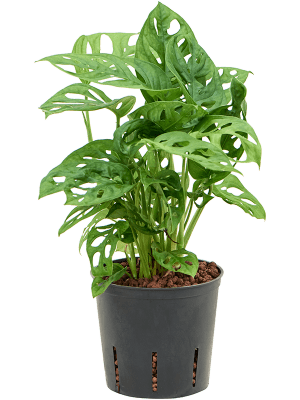
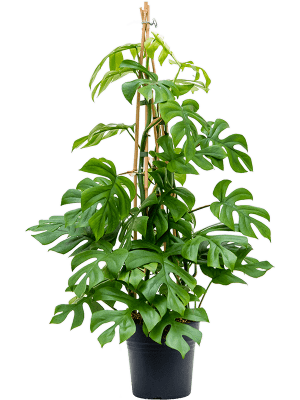
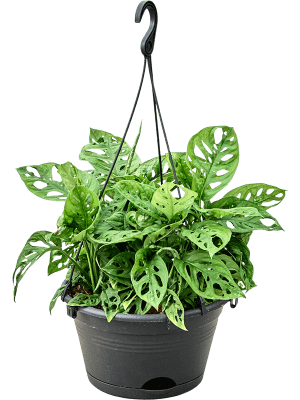
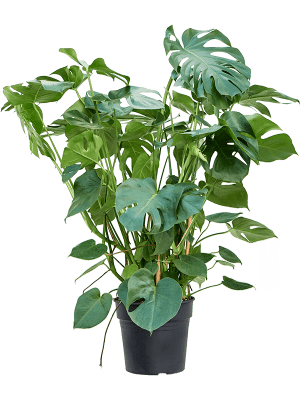
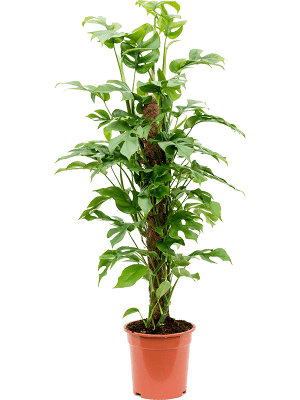
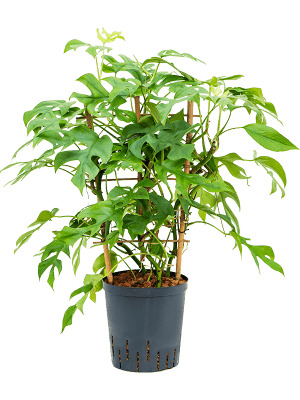
| Téléphone NL | +31 885 014 000 |
|---|---|
| Téléphone NGC | +31 885 014 014 |
| Téléphone FR | +33 (0)130 760 344 |